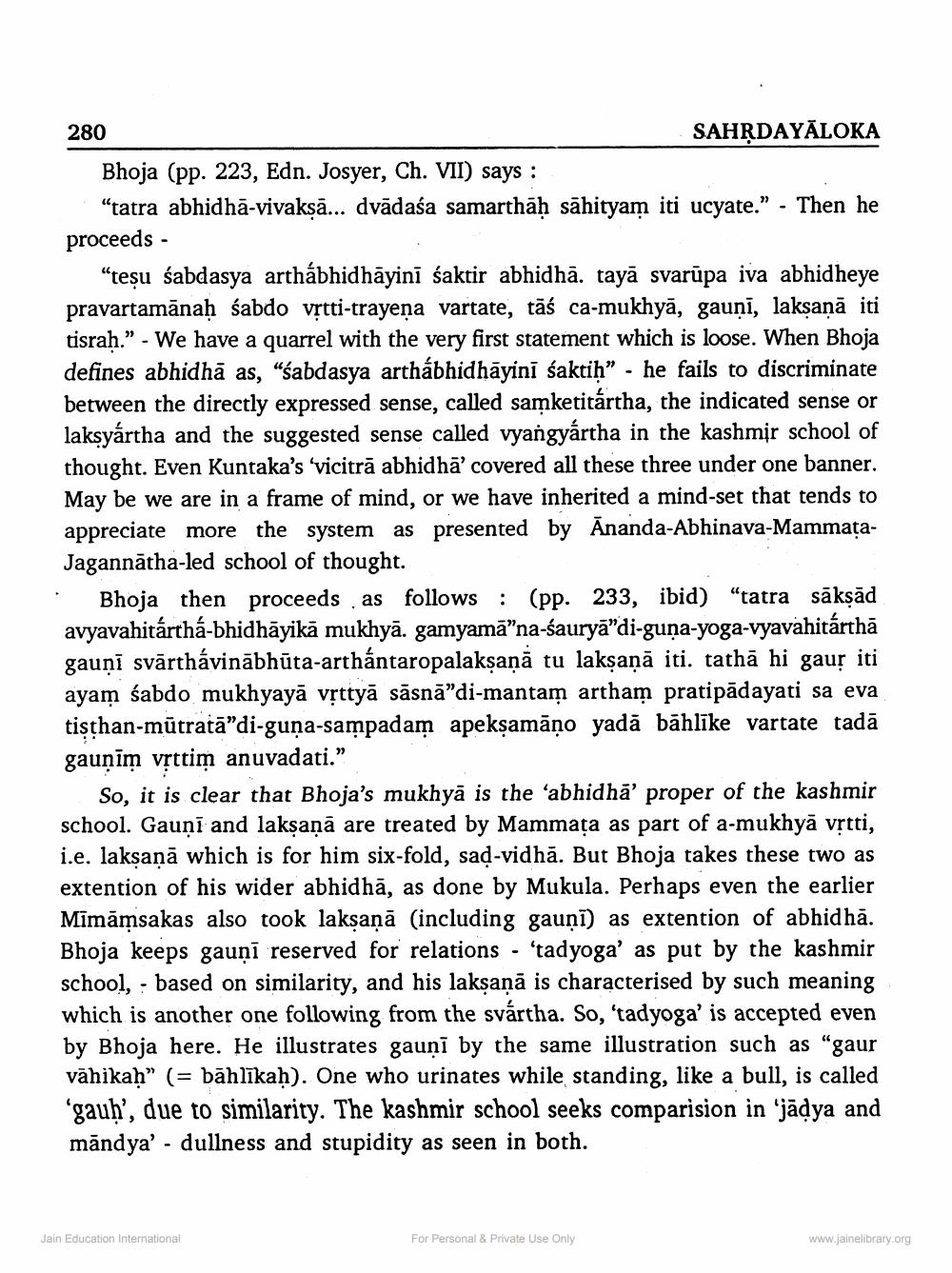________________
280
SAHRDAYĀLOKA Bhoja (pp. 223, Edn. Josyer, Ch. VII) says :
"tatra abhidhā-vivaksā... dvādaśa samarthāḥ sāhityam iti ucyate." - Then he proceeds -
“teșu sabdasya arthábhidhāyinī śaktir abhidhā. tayā svarūpa iva abhidheye pravartamānaḥ śabdo vrtti-trayeņa vartate, tāś ca-mukhyā, gaunī, laksaņā iti tisrah.” - We have a quarrel with the very first statement which is loose. When Bhoja defines abhidhā as, “sabdasya arthábhidhāyinī saktiḥ” - he fails to discriminate between the directly expressed sense, called samketitártha, the indicated sense or laksyártha and the suggested sense called vyangyártha in the kashmir school of thought. Even Kuntaka’s ‘vicitrā abhidhā' covered all these three under one banner. May be we are in a frame of mind, or we have inherited a mind-set that tends to appreciate more the system as presented by Ananda-Abhinava-MammațaJagannātha-led school of thought. • Bhoja then proceeds as follows: (pp. 233, ibid) “tatra sākṣād avyavahitárthá-bhidhāyikā mukhyā. gamyamā”na-śauryā”di-guna-yoga-vyavahitárthā gauņi svārthávinābhūta-arthántaropalakṣaṇā tu lakṣaṇā iti. tathā hi gaur iti ayam śabdo mukhyayā vrttyā sāsnā”di-mantam artham pratipādayati sa eva tişthan-mūtratā"di-guna-sampadam apekşamāņo yadā bāhlike vartate tadā gauņīm vịttim anuvadati.”
So, it is clear that Bhoja's mukhyā is the ‘abhidhā' proper of the kashmir school. Gauņī and laksaņā are treated by Mammața as part of a-mukhyā vịtti, i.e. laksaņā which is for him six-fold, sad-vidhā. But Bhoja takes these two as extention of his wider abhidhā, as done by Mukula. Perhaps even the earlier Mīmāmsakas also took laksaņā (including gaunī) as extention of abhidhā. Bhoja keeps gauņī reserved for relations - 'tadyoga' as put by the kashmir school, : based on similarity, and his laksaņā is characterised by such meaning which is another one following from the svártha. So, 'tadyoga' is accepted even by Bhoja here. He illustrates gauni by the same illustration such as "gaur vāhikah” (= bāhlīkah). One who urinates while standing, like a bull, is called 'gauh', due to similarity. The kashmir school seeks comparision in 'jādya and māndya' - dullness and stupidity as seen in both.
Jain Education International
For Personal & Private Use Only
www.jainelibrary.org




